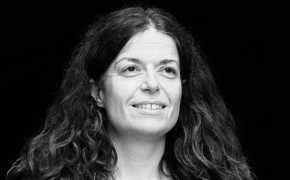Re-use shops require a continuous flow of goods that are suitable for re-use. In Styria, various collection systems have been developed for this purpose.
The following collection systems for reusable goods have been developed; Styrian waste collection centres should choose the most suitable for the respective region: *The Reuse Box was introduced in the city of Graz in 2014. The Reuse-Box is a stable cardboard box (dimensions: 51*28*41 cm) for the pre-collection of reusable goods mainly in households. The filled box can be handed in at the Reuse shops of Caritas in Graz (these shops are called CARLA). The waste collection centre of the city of Graz has also been accepting these boxes on Reuse Fridays since 2014. *Re-use corners have been set up at eight waste collection points for the collection of reusable goods; 7 of these are operated by Carla (Caritas Styria donation markets). *The Recource Park concept has been developed on behalf of the Waste Management Department/Office of the Regional Government of Styria. This is a further development of the formerly rather small waste collection centres. These small centres were abandoned and combined into larger "resource parks", each of which now also operates a reuse shop. The advantages of the larger resource parks are obvious: these parks can collect waste with a high level of waste sorting, they have customer-friendly opening hours and professional equipment. The concept of the resource parks provides for a reuse shop to be operated there or at least a collection point for reuse goods to be set up. Currently 3 reuse shops are operated in Styrian resource parks.
Resources needed
Reuse Box and Reuse Corner require partners who operate a Reuse Shop. The Reuse Box is easy to set up, but requires easily accessible issue and return points. Reuse corners need to be maintained regularly, otherwise waste could be handed in. The resource park concept can be adapted to local needs.
Evidence of success
Each of the collection systems is well accepted by the population. Evidence of success are the collected quantities of reusable goods and the achieved turnover. Both depend on the specific system in use. E.g. with the reuse box 500 tons of reusable goods could be collected in the introductory phase alone. The reuse-shop in our newest resource park has sold about 8.000 pieces in the first year of operation 2019; in 2020 ca. 5.000 items have been sold until October (average prize: € 8.20).
Difficulties encountered
In the case of the reuse shops integrated in "resource parks" it quickly became apparent that the originally planned area of 50 m2 was far too small and should be at least twice as large.
Potential for learning or transfer
The potential is high. The Reuse Box has already been transferred in other regions. Reuse corners and resource parks with affiliated reuse shops have already been implemented several times in Styria. The integration of an attractive collection system for reusable goods in a waste collection centre according to the "resource park" concept increases the visibility of both reuse as the 2. level of waste hierarchy and reuse shops. The success of the existing reuse shops at our resource parks highly recommends imitation. It has been shown that a cooperation of waste collection centres/resource parks with socio-economic enterprises in the reuse sector can result in synergy effects from the two worlds of experience.
Please login to see the expert opinion of this good practice.
Tags: Circular economy, Logistics, SME, Waste








